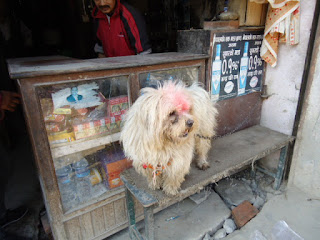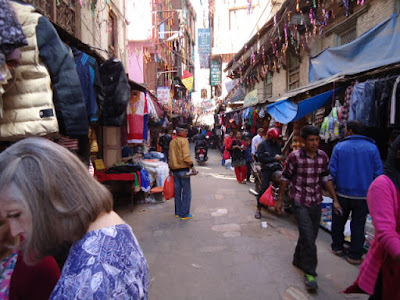Dr. Anu Sharma demonstrating neo-natal resuscitation.

This is Dr. Anu's father, Dr. Kamal Sharma providing instruction. Dr. Kamal has been part of every Helping Babies Breath team since the program started. He helps conduct our sessions.
Lear presenting a certificate of completion
Scott presenting a small gift of appreciation to the Director of the National Health Training Center, Dr. Shree Krishna Bhatta. . NHTC is the agency that sponsors and sanctions the HBB training.
We went to a botanical garden on our only off day of the trip. Scott was taking pictures of children and this very pretty Nepali girl asked to have her picture taken.
This is a type of rose that we saw in the botanical garden. It does not look like any rose in the USA.
Tami Matthews, a neonatal nurse from West Point Utah, demonstrating resuscitation.
Dr. John Golden a neonatologist from the Seattle area giving instruction. John is a US Air Force Academy graduate. It was a surprise to have two grads together in Nepal.
Dr. George Groberg is a pediatrician from Idaho Falls, ID. He was our team leader and did an outstanding job.
A Nepali nurse practicing resuscitation. The small manikin that we use is a water filled doll called a Neo-Natalie. It is designed to mimic a baby getting resuscitated.

An ox cart moving along the street in front of our hotel.
Some school boys headed for school. Most schools in Nepal have uniforms. That is a practice that would do some good back in the USA. It is an equalizer. Nobody is wearing the latest fashion.













































